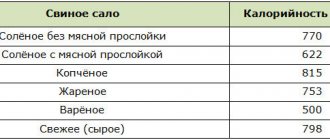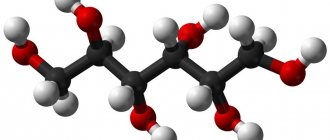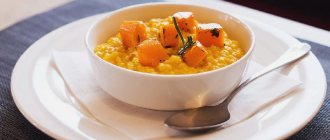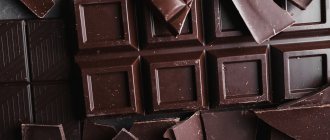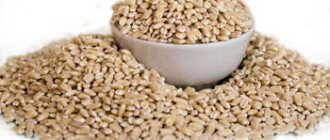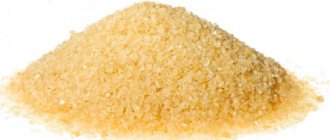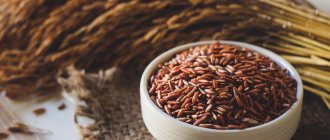What is a lard diet?
In many food systems, lard and fatty foods are prohibited, so they are contraindicated for some people. The fat diet for weight loss was developed by the famous Polish nutritionist Jan Kwasniewski. According to his method, it is allowed to eat fatty meat and lard, but at the same time exclude all foods containing carbohydrates while losing weight. In addition, the doctor advises to adhere to the following rules:
- There is a separate room where there is no TV or other distractions.
- Divide the daily amount into small portions, 4-5 times a day, and do not eat enough at one time.
- You can eat eggs, meat, sour cream, kefir and milk.
- Vegetables allowed to include celery, legumes, corn, carrots and onions in the diet.
- Fruits should be replaced with still mineral water.
Product selection and preparation
For the results of the Kwasniewski diet to be noticeable, it is important to choose the right lard. It is recommended to buy it on the market and from a trusted supplier.
Main parameters of fresh lard:
- uniform white color, without yellowness or gray spots;
- absence of blood streaks;
- thickness no more than 2.5-3 cm;
- inclusion of meat layer up to 25% of the total volume;
- elastic structure, but not rigid;
- absence of bristles on the skin.
One kilogram of fresh lard is enough for a month of weight loss diet.
You can prepare the product yourself at home:
- Place onion peels in an enamel pan, add water and boil over low heat for about an hour.
- Turn it off and let it brew for 10–12 hours.
- After this, put a piece of lard into the infusion and turn on the stove again. Cook until done.
- Leave the product in a pan with onion broth for several hours.
- Drain the liquid, lightly dry the lard and sprinkle with spices: cinnamon, coriander, thyme, nutmeg, cloves.
Then they are wrapped in food paper and stored in the freezer.
Is it possible to eat lard while losing weight?
Most women are interested in the question: is it possible to eat lard on a diet? Doctors answer it positively. The product itself does not lead to obesity. If you follow the daily calorie intake, excess weight gain will not occur. It is recommended to eat lard along with vegetables and dietary products consisting of slowly digested carbohydrates. These include bran, black bread and multi-grain cereals.
Lard is a Healthy Source of Cholesterol
Lard ranks 18th among foods rich in cholesterol (). As a protective response in the body, cholesterol levels rise during periods of stress or in the presence of inflammation. Research shows that cholesterol intake does not have a cause-and-effect relationship with blood cholesterol levels. This is because the body produces the cholesterol it needs on its own. However, providing cholesterol through good quality fats reduces the burden on the body to produce cholesterol. Dietary cholesterol from whole foods, such as lard, provides inflammation management and hormone production. In fact, numerous studies have linked very low blood cholesterol levels to a higher risk of mortality (, ,), a higher risk of depression (,), a higher risk of aggression and suicide (,), and a higher risk of dementia and Alzheimer's disease ( , ).
Salo - benefits and harms when losing weight
Like any product, lard can be harmful and beneficial for the body. If you use it in small quantities, it will not harm even overweight people. Scientists have found that lard contains many substances necessary for humans:
- vitamins – PP, A, B4, E;
- microelements – zinc, selenium, magnesium, sodium, iron;
- organic acids – linoleic and arachidonic.
These components affect fat deposits, help normalize hormones and make lard one of the effective products for weight loss. In addition, it contains cholesterol, which is necessary for the nutrition of the heart muscle, blood vessels, and the formation of new skin cells. A diet using lard in the menu has advantages over other nutrition systems:
- A person eats fully and does not feel hungry.
- The weight decreases gradually, but remains for a long time.
- The body receives the necessary nutrients.
- Lard for weight loss is suitable in salted, fresh form, as a base for fried dishes.
In addition to the advantages, a lard diet for weight loss has disadvantages: the product is very high in calories, contains 87% fat, and you are allowed to consume several pieces per day. If you do not limit the number of pieces you eat, your body will begin to accumulate fat and your weight will increase. Cholesterol levels also increase, so Dr. Kwasniewski advises eating small portions and not overeating at night.
What are the health benefits of lard?
Strengthens the cardiovascular system
It is believed that lard increases the risk of cardiovascular diseases, but in reality the opposite is true. This product ranks second after olive oil in the amount of healthy monounsaturated fatty acids (48%) and polyunsaturated fatty acids (12%). They are involved in the construction of cells and the restoration of damaged ones, including vascular, heart and brain cells. Another important part of pork fat is arachidonic acid, which helps strengthen cardiac and vascular tissue.
Photo source: shutterstock.com
What about the saturated fats found in lard? Firstly, they are not as dangerous as our own cholesterol, produced in the liver. An analysis of more than 300,000 people published in the American Journal of Clinical Nutrition shows there is no evidence that consuming saturated fat increases the risk of cardiovascular disease. Secondly, lard contains quite a lot of choline, and it can neutralize the harmful properties of cholesterol and protect blood vessels.
Cleanses the body
Unlike muscle fibers and bones, lard does not accumulate radionuclides, which have a detrimental effect on all living cells and cause oncological processes. Moreover, Canadian scientists have proven that lard helps remove toxic substances from the human body.
ABC RECOMMENDS
What is the calorie content of raw, smoked, salted, boiled and fried lard: composition, table and BJU per 100 grams
Provides vitamin D
Lack of vitamin D is a fairly common and serious problem, as it can cause osteoporosis, cardiovascular diseases, hormonal imbalances and nervous system disorders. To compensate for the deficiency of this element, it is worth introducing lard into the diet.
Photo source: shutterstock.com
Pork fat has the second highest amount of vitamin D after cod liver oil. Just one tablespoon of lard from pastured pigs contains 1.06 mg of vitamin D. It is worth noting that it belongs to the class of fat-soluble, that is, it is well absorbed along with fatty acids, which are also present in lard.
Eliminates skin problems
Lard contains vitamins A, E and D, as well as choline and retinol, which have anti-inflammatory and antioxidant properties. They slow down the aging process of the skin, maintain its tone, eliminate flaking and dryness. Sometimes lard can even help with acne.
Daily norm of fat
Doctors included the product in the list of high calorie content. 100 grams of fresh salted lard contains 860-900 kilocalories. An overweight person should consume no more than 1,100 calories per day in order to have enough energy to work and begin the process of losing weight. It is allowed to eat lard along with other foods during the diet. The recommended daily intake depends on lifestyle and degree of obesity. On average, you can eat from 20 to 60 grams of lard. A nutritionist will help determine the exact amount based on the patient’s weight.
- Mackerel baked in the oven, stuffed. Detailed recipes with photos
- How to lower blood sugar
- Causes of ectopic pregnancy in women, signs and development in the early stages
How and how much to eat
How many?
There is no consensus among doctors and nutritionists about the daily intake of lard. Some say that it should not exceed 30 g per day. Others argue that this is too much, and set a different limit - 100 g per week. Such a small serving size is associated with the high calorie content of the product. To lose weight, you can choose something in between: eat either 20 g 5 times a week, or 30 g every other day, so as not to exceed the recommended norms.
With what?
What it goes with (in a bite):
- rye bread and garlic (it makes the perfect afternoon snack);
- onions;
- cabbage soup, borscht, solyanka;
- mustard, horseradish;
- vegetable dishes: stewed beets, carrots; cabbage salad, zucchini;
- scrambled eggs;
- herbs (especially dill)
What it doesn't go with:
- white bread;
- drinks;
- grain side dishes;
- meat, fish;
- dairy products;
- potatoes.
It’s worth mentioning separately about lard as a snack for alcohol. Firstly, it is undesirable to drink alcohol when losing weight, so this question should not arise at all. Secondly, the combination of bacon and vodka has its pros and cons. If a situation arises where you can’t give up drinking:
- pork fat envelops the walls of the stomach, preventing the active absorption of alcohol into the blood, preventing rapid intoxication;
- alcohol, in turn, accelerates its breakdown and digestion;
- BUT! such a tandem puts a powerful load on the liver, as a result of which some of its actively functioning cells may die.
If during weight loss there is a need to drink alcohol, then it is better to combine red wine with lard - it is both good for blood vessels and without any particular harm to health.
When?
Definitely not for the night. Fat overloads the digestive tract and slows down the digestion process. Fats will not be able to be broken down and will not be used to produce useful energy, but will be stored as reserves in problem parts of the body. The situation with dinner is not so critical: perhaps it will have time to be digested, but it’s not worth the risk.
The optimal time to use it when losing weight:
- It is recommended to eat fresh lard on an empty stomach in the morning to start the necessary metabolic processes;
- for lunch, as a snack with soup or vegetable main courses;
- for an afternoon snack, for refreshment;
- immediately after physical activity to restore strength.
Which one is better?
Experts have an unequivocal answer to this question, but it is not entirely pleasant for those who are struggling with excess weight. Unsalted lard will really help you lose weight. This is what will speed up your metabolism, start fat burning, and help you cope with hunger. However, many may not tolerate its taste. The solution is to eat a bite with the same garlic and rye bread.
On a note. The healthiest lard is considered to be the one with minimal meat streaks and a thin skin.
You can eat salted lard while losing weight, but under certain conditions. It is not subjected to heat treatment, retaining all its beneficial properties. At the same time, do not forget how much salt is used for its preparation, which is included in the list of forbidden foods in almost all diets. It disrupts the water balance, retains fluid in the cells and promotes the formation of edema. All this can add extra pounds, not remove them. Therefore, if you allow yourself such indulgence, then no more than 10 g per day.
It’s better not to think about smoked food at all. When treated with smoke, it accumulates many carcinogens that are hazardous to health. Sodium nitrate is usually used as a preservative for it, which promotes obesity and swelling. Nitrosamines formed during high temperatures are suspected of leading to gastrointestinal cancer.
If you are losing weight, forget about fried and melted lard.
Recipe
As a bonus, here is a recipe for boiled lard for those who can’t bring themselves to eat it fresh:
- Pour 500 g of onion peels into 2 liters of hot water.
- Boil.
- Set aside for 12 hours to infuse.
- Strain.
- Put 1 kg of fresh lard into the resulting broth.
- Boil for 1-1.5 hours (until ready).
- Cool the lard, cut into portions.
- Roll in spices to taste. For weight loss, it is recommended to take coriander, cloves and cinnamon. But traditional salt and pepper are undesirable, as they increase the load on the liver.
- Place in the freezer.
Some people don't like the smell and taste of onion skins. Therefore, you can boil bacon in plain water. Some generously sprinkle it with chopped dill and mix the pieces with thinly sliced garlic cloves, and then freeze them. There can be many variations of recipes. The main rule is no salt. Otherwise, you can’t count on losing weight.
I have an opinion. Some nutritionists are categorically against eating lard on an empty stomach. They claim that this puts an excessive load on the pancreas and can lead to pancreatitis.
How to lose weight with lard
The lard diet for weight loss is very simple - you need to adhere to the daily intake of lard and the list of allowed foods. Nutritionists believe that to lose weight you should only use high-quality lard, purchased on the market or prepared at home yourself. When purchasing, you should adhere to the established criteria:
- thickness no more than 3 cm;
- the meat layer should not be more than 25%;
- preference is given to hot-salted lard.
You can prepare the product at home yourself:
- Take 2 handfuls of onion peels and boil in 1 liter of water for an hour.
- Add 2 tbsp. l. salt with a slide, mix.
- Strain the husk, put lard in it and put it on low heat for 30 minutes.
- Turn off the stove, cover the pan with a lid and leave until morning.
- Rub the lard with garlic and roll in a mixture of spices.
- Keep refrigerated.
Lard diet menu
According to Kwasniewski’s method, 10 days are allotted for the diet. For this period, you should buy or prepare 200 g of the product, divide it into 10 parts and eat lard on an empty stomach every day in the morning. In an hour you can have breakfast. The rest of the time, lard is allowed to be eaten with bread or fried on it. Sample menu for 1 day:
7.00 – piece of lard 15 g;
8.00 – omelet of 2-3 eggs in lard with gray bread;
10.00 – 100 g low-fat cottage cheese with sour cream;
13.00 – fried chicken with boiled potatoes, 15 g of lard with bread;
16.00 – 2 boiled eggs;
18.00 – cheesecakes with sour cream.
During the day you can drink still mineral water in any quantity, but not less than 2 liters. Any snacks between meals are prohibited. The product contains a lot of salt, so its amount in other dishes should be limited. The menu can be changed based on the list of permitted components. If desired, the lard diet for weight loss can be extended to 1 month, but it is not recommended to use it for longer than this time.
Lard is heat resistant
When fat is heated, the unsaturated bonds between carbon atoms in the fatty acid chains are broken. Saturated fats are very stable when heated. Monounsaturated fats have one double bond. Double bonds in fatty acids are unstable and can be broken when heated. Polyunsaturated fats are the most unstable because they have numerous double bonds in the carbon chain. When the double bonds in mono- or polyunsaturated fats are broken, the fatty acid undergoes a process called oxidation . Why are oxidized fats harmful? To put it very simply, oxidized fats = free radicals. Free radicals = cell damage = cancer . While free radicals are inevitably present in our bodies, we must reduce these harmful molecules as much as possible to protect health and reduce inflammation. Lard's percentage of saturated fat protects the most vulnerable mono/polyunsaturated fats from oxidation when heated , making lard an excellent choice for cooking and baking.
For example, one study compared the oxidative stability of lard with sunflower, canola, and peanut oils. In this study, scientists heated each of four fats to different temperatures ranging from 25 to 200 °C. The results showed that ():
- Heated lard generates fewer harmful free radicals than other oils
- Lard was less prone to oxidative degradation, likely due to low levels of linoleic acid (omega-6)
- The peroxide value, which indicates oxidation products, did not increase in lard until temperatures above 150 °C and increased slowly. On the other hand, the peroxide index values for vegetable oils increased rapidly after just 3 minutes
- Only lard showed a slow increase in oxidation products above 200 °C, and all other oils showed rapid breakdown and oxidation.
Lard contains only about 11% polyunsaturated fatty acids, which are the most heat-sensitive (and oxidation-prone) type of fat ().
Dish recipes
Fried pork: place a piece of meat weighing one hundred and fifty grams in a frying pan greased with vegetable oil, fry for fifteen to twenty minutes, then cover with a layer of egg beaten with breadcrumbs and cook for another five minutes.
Cheesecakes: mix half a kilo of cottage cheese with three grams of flour, two eggs, fifty grams of butter; add salt and stir until smooth; Make cheesecakes, roll in flour and fry in pork fat.
Tomato soup: add two tablespoons of tomato puree, onion, one and a half glasses of sour cream, sixty grams of butter, herbs, seasonings to taste, salt, and boil to one liter of beef bone broth.
Sorrel soup: add half a kilogram of sorrel stewed in oil, two glasses of sour cream, herbs, seasonings and salt to half a liter of pork bone broth, boil and serve with chopped eggs.
